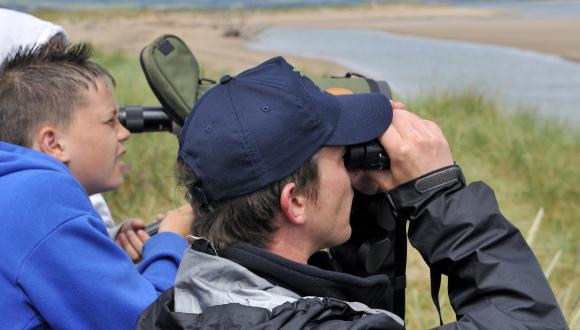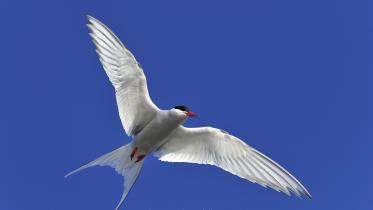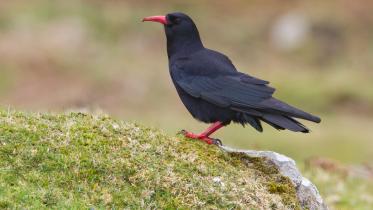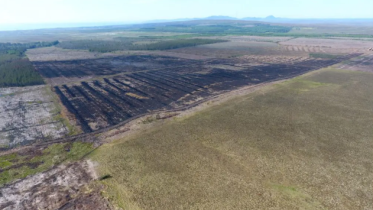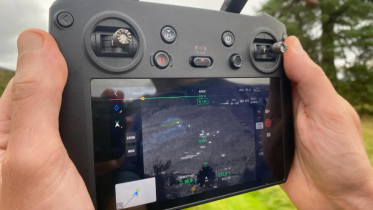NatureScot Science Quarterly Newsletter - Issue 36 - July 2021
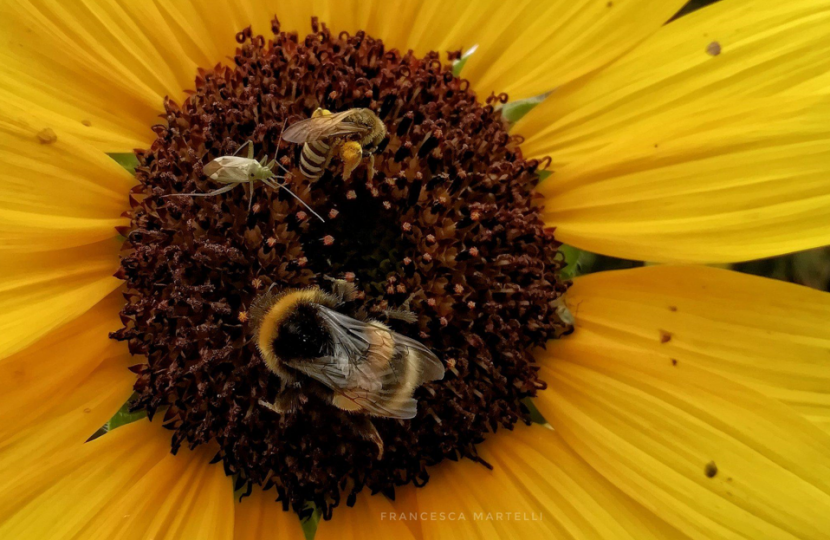
Welcome from the SAC Chair
Pete Higgins
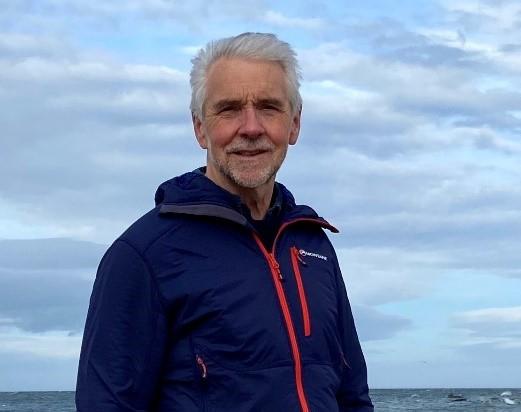
I imagine for many readers of this newsletter a 'proper' summer holiday is long overdue, and for many of us, including myself, this has been the first in two years. I am fortunate to have just spent a week in the North-West Highlands, which I first got to know as a salmon biologist, and then roaming its hills and paddling its lochs. Whilst there, I found myself musing on writing an introduction to this issue as I frequently reflected on our knowledge and understanding of the natural world. These are some of the thoughts that struck me, offered in respectful recognition of the scientists and others who have done so much work in these parts.
In decent visibility it is impossible to be in that landscape without being in awe of the mountains and the generations of geologists, going right back to Peach and Horne in 1907 who have uncovered and told its story, leading to its recently acquired status (2004) as Scotland's first UNESCO Geopark. The sea cliffs of Handa, offer a different experience of awe - their scale combined with the number of nesting/roosting seabirds, viewed from my insignificant sea-kayak, led me to reflect on our knowledge of the biology of the birds, their relationship with the marine environment and their population trends. What an amazing, thing it is that reasonably accurate annual counts are made of many tens of thousands of seabirds.
From that grand scale to another - the first time I have knowingly seen a 'Pale Butterwort' (Pinguicula lusitanica L.) - a single plant pointed out by my sharp-eyed son on a walk up Ben Hope. The records of its distribution, collected over many decades by amateurs as well as professional botanists, show its close association with this area of Scotland. The fact that I have not noticed it previously is a lesson in truly 'observing and seeing' - core skills of science.
The rocks of course dominate the 'land-uses' - whether human or other species, and the social historians as well as the soil-scientists provide the insights we need to conserve, manage and indeed use (hopefully sustainably) these areas. I cannot be in such places without thinking of the social and cultural history, and I brought along a collection of Norman MacCaig's poetry to stimulate and provoke my reflections. His poem 'A Man in Assynt' has always been a favourite - and the lines: 'Who possesses this landscape? The man who bought it, or I who am possessed by it?' - still send shivers down my spine. Whilst the empty glens echo with the impact of the Clearances, the influx of visitors, particularly on the 'North Coast 500' provide a transient community - and prompt me to think how we might meaningfully support and enhance their 'connection with nature', particularly towards a more sustainable future.
Not all the above relates directly to the contributions to this issue – including 'Citizen Scientists', collaring Greylag Geese, an indicator of 'nature connected-ness', and NatureScot's pollinator monitoring and research partnership - but I'm sure readers will note the significance of interdisciplinarity that is so central to both the science and our experience of nature. I hope you enjoy this issue!
A Thank You video to Scotland’s Citizen Scientists
Abi Gardner and Alan Cameron
As a contribution to marking the end of the ‘2020 Biodiversity Challenge for Scotland's Biodiversity’ the NatureScot Biodiversity Strategy Team put together a video featuring many staff members to recognise and celebrate the contribution made by volunteer citizen scientists to conservation in Scotland. The video was released during Citizen Science Month, April 2021 and shared with partner organisations and through our own digital and social media.
To mark the end of the 2020 Biodiversity Challenge, our Chief Executive Francesca Osowska, along with staff from across NatureScot, wanted to say thank you and celebrate your contributions to protecting and enhancing nature in Scotland.
The video includes an introduction from CEO Francesca Osowska in which she thanks volunteers and recognises the critical importance of data collected through citizen science surveys and projects in protecting and enhancing Scotland's nature.
In her introduction Francesca highlights how data from citizen scientists help us to understand the natural world, from monitoring and reporting on species populations and abundance, the arrival and spread of INNS, the status of notified features on protected areas, mapping of habitats and assessing their health, monitoring outcomes from conservation management actions, to organising activities that aim to involve people and communities in local environmental monitoring.
Filmed over the period of Covid, staff members videoed themselves from home or local greenspace, in all weathers, to thank organisations and individuals involved. Some of those mentioned include the CalMac Ferries Marine Awareness programme, Butterfly Conservation, SeaSearch, North East Sea Kayakers and Integrate Paddling, The Scottish Ornithologists' Club (SOC), TCV Scotland Counts project, Moray Firth SPA Seaduck Count Volunteers, Dumbrock Loch Meadows volunteer orchid recorders, NatureScot’s National Nature Reserve Volunteers, the Community-led Marine Biodiversity Monitoring Project, Wester Ross Scenic Photo project, Botanical Society of Britain & Ireland (BSBI), Botanical Society of Scotland, Plantlife, and the Scottish Invasive Species Initiative.
The video highlights only a few of the projects and partnerships happening across Scotland, spanning a variety of species and habitats, some that have been running for years and forming the basis of long-term monitoring and reporting, and others that are exciting new endeavours.
The video is to thank all citizen scientists, even if not explicitly named, so we have asked our partners to share this far and wide. It is housed on Naturescot’s website Citizen Science in Nature.Scot
Developing a nature connectedness indicator for Scotland
Abi Gardner
Human connection with nature is a topic of increasing research and policy interest, a focus owing to the crises of biodiversity loss, climate change and in mental well-being. The negative human impact on planetary health suggests a failing relationship between people and the rest of nature. The Intergovernmental Science-Policy Platform on Biodiversity and Ecosystem Services (IPBES) report highlights that the direct drivers of change are underpinned by people and societal values and behaviours towards biodiversity - they are less connected with nature and undervalue the benefits nature provides.
Nature connectedness is a robust, psychological construct which describes the relationship between an individual and the rest of nature. The construct of connectedness to nature has many dimensions, including affective, cognitive and experiential factors related to our belonging to the natural world. Nature connectedness is also concerned with an individual’s sense of self and the extent we believe we are a part of nature. This influences how we respond emotionally to nature and therefore influences our attitudes and behaviour towards it. It is understood that connecting with nature is much more than simply our exposure to nature, often measured in time or number of visits. To connect with nature, you must tune into the natural world, noticing the sounds, sights, textures, and scents.
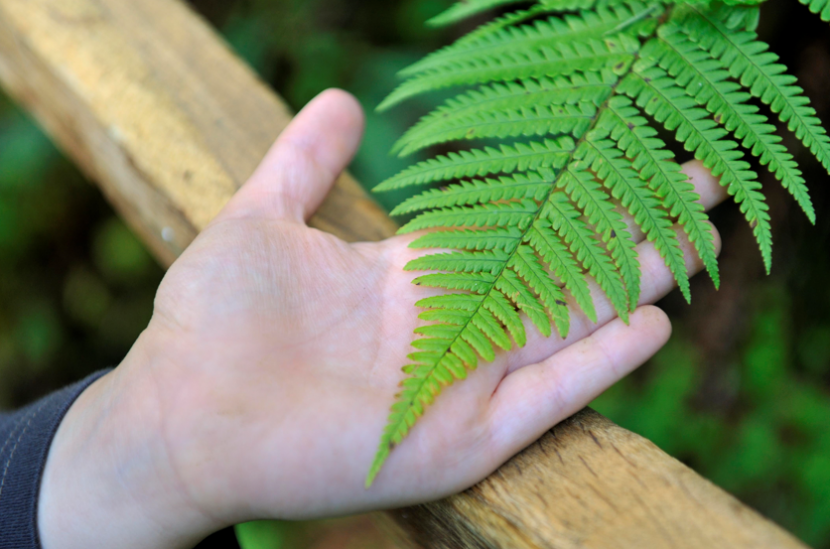
There is a growing body of evidence that demonstrates connecting with nature has positive benefits for our health and wellbeing. It also shows that nature connectedness is linked closely to pro-environmental and pro-nature conservation behaviours (together pro-nature behaviour), and has shown to be a suitable indictor, with stronger nature connectedness leading to increased likelihood of pro-nature behaviour.
With the need to redefine our relationship with nature, population measures of nature connectedness are required to help target, design, and evaluate strategic policy and practice interventions. By measuring nature connectedness across the population, we can track whether nature connectedness policy and communications are having the desired effect on the population’s pro-nature behaviours. Whilst a range of measures for nature connectedness have been developed, many are unsuitable for a national survey context due to number, length, and complexity of statements, nor are they suitable for all ages. Work at NatureScot is underway to assess the suitability and successful implementation of the Nature Connection Index (NCI) for population level surveying in Scotland.
The NCI, developed by the University of Derby and tested using Natural England’s MENE survey, relies on supplying six statements, informed by the 5 pathways to nature connectedness (a subset of the nine values of biophilia) and asking respondents how strongly they agree or disagree. The data are then analysed using a pre-defined methodology and a population’s score is recorded as a number from 0 to 100. In order to measure this we propose the NCI questions are included in a nationwide survey such as Scotland’s People and Nature Survey (SPANS).
The indicator would be relevant to a number of important policies including Scotland’s Environmental Strategy, the forthcoming post-2020 Scottish Biodiversity Strategy, the National Performance Framework as well as NatureScot's own Corporate Plan.
Tagging and ringing greylag geese in Iceland 2021
Simon Cohen
Icelandic greylag geese winter almost exclusively in the UK, particularly Scotland, with small numbers overwintering in Iceland and a very small group (c.300) wintering in SW Norway. Having peaked at 111,500 in 2011 the population has been steadily declining with the 2019 estimate being 73,300. In recent years the distribution of birds wintering in the UK has also moved northwards with over 70% now found in North Scotland, primarily on Orkney.
The greylag goose is Britain’s only native breeding goose but, due to hunting and persecution, was reduced by the early 1900s to a small remnant population in the far NW of Scotland. Between the 1930s and 1960s birds, derived from eggs taken from this population, were released in their former range in the UK. Both the remnant NW Scotland population and the re-established population have increased in numbers and range to a point where they have overlapped and it is now impossible to treat them as separate populations. As a result, since 2010, all greylag breeding in Britain have been recognised as a single non-migratory British greylag goose population.
The expansion of the British greylag population has brought them into conflict with agriculture, primarily in the Outer Hebrides and Orkney. As a result goose management schemes have been established in these island groups aimed at reducing agricultural damage by reducing the local greylag goose populations. The greylag goose was also added to General Licence 02 (GL02) in Scotland that allows greylag geese to be taken all year round to prevent serious damage to crops.
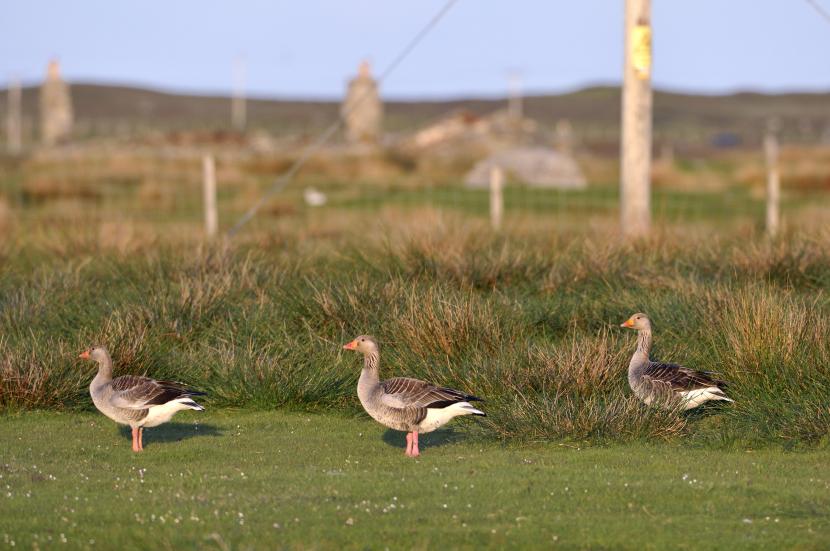
©Lorne Gill.
As the two populations are indistinguishable in the field, producing a separate count of Icelandic birds has become increasingly difficult. Orkney, now the main wintering site for Icelandic birds, has a resident population of approximately 20,000 British greylags, and Icelandic birds are estimated by counting all greylag on the islands and then deducting the number of geese counted in late summer before they arrive. The difficultly in separating the two populations has also resulted in a decision, based on ring re-sighting data and by comparing limited summer and winter counts, to treat all greylag counted south of a line running from Bute in the SW to Aberdeen in the NE as being British greylags. This may mean the number of Icelandic birds is underestimated if there are still large numbers wintering south of this line and mixing with the British residents. The ability to make age assessments and derive productivity figures for the Icelandic birds while they are in the UK is now almost impossible because of the mixing with British birds, which are likely to have very different productivity rates.
To attempt to answer some of the questions about the winter distribution of Icelandic greylag geese, and how they mix with British greylag in Scotland, NatureScot and the Icelandic Institute of Natural History have formed a partnership to attach GPS collars to 33 greylag geese in Iceland in summer 2021. By using telemetry the aim is to identify how the two populations mix in Britain during the winter, allow age estimates to be made in Iceland when the birds are being marked, and potentially in Britain if there are marked birds in family groups, and of course to track movements of birds within Britain and Iceland.
NatureScot and the Icelandic Institute are hoping that goose counters across the UK will report any collared greylag geese seen. The telemetry collars are grey and there will also be an orange leg ring on tagged birds. A small number of greylag may also be marked with orange leg rings and orange, non-telemetry, collars during the project.
BES report on Nature-based Solutions for Climate Change in the UK
Elana Bader
With the run-up to COP26 well underway, 2021 is proving to be an exciting year for emerging practice and the mainstreaming of Nature-based Solutions (NbS) across many sectors, in a decade that will no doubt be remembered as one of the most seminal in human history. In response to this, the British Ecological Society (BES) published its report on Nature-Based Solutions for Climate Change in the UK in May 2021.
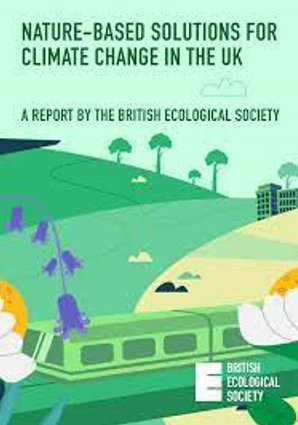
Several NatureScot staff contributed to the report: Elana Bader was a co-author of the chapters on Built Environment and the Economic Valuation and Investment Options for Implementing NbS chapters; Jeanette Hall worked on Woodlands; Mike Smedley on Heathlands; and Martin Faulkner on Economic Valuation and Investment Options for Implementing NbSl. In addition to the chapter authors, NatureScot colleagues Andrew Coupar, Andrew McBride, Clive Davies, Karen Rentoul, Nick Everett, Clive Mitchell and Tracey Begg provided feedback and input, including as part of the review process.
NatureScot’s staff were key to ensuring that the report upheld a wider, multi-functional view of NbS, maintaining the crucial systemic, joined-up approach that is core to any NbS intervention, and avoiding a focus on singular emphases such as carbon capture or other individual ecosystem services. Several NatureScot publications on Natural Capital and NatCap Investment, Agri-Environment Climate Scheme, Climate-Driven Drought, Sustainable Drainage Systems (SuDS), Open Mosaic Habitats and the Green Infrastructure Strategic Intervention were also referenced throughout.
The report emphasises the key benefits and opportunities for NbS to address the twin climate and biodiversity crises. These crises have been highlighted on the international stage by the joint IPBES/IPCC report on biodiversity loss and climate change. This stresses that these two crises are inextricably linked, and adds to the momentum that systemic change is needed in order to address the multiple impacts and very real issues we are facing on land and sea.
By providing an assessment of key UK habitats, the BES report accounts for how natural processes can help address these twin crises and deliver social, environmental, and economic resilience. It also highlights current research and knowledge gaps, identifies incentives, and recognises the structural, governance and policy transformations that are needed to mainstream - and finance - the appropriate and large-scale deployment of NbS to deliver the change we need.
Crucially, the report emphasises that NbS are not intended to replace any one existing approach, but rather to produce complementarity, additionality, and opportunities for positive change and impact. WE should also see multiple outcomes for conservation, climate change adaptation responses, health and wellbeing, the economy, placemaking, and biodiversity. Key across the chapters was the call for the appropriate contextualisation and siting of NbS interventions - which could be summarised, in short, as the right NbS, in the right place, for the right reasons – linking natural and socio-economic systems together.
With NatureScot currently reviewing its own leading role in the development and delivery on NbS this report helps to channel much of the available evidence as well as NatureScot’s existing expertise on NbS. It helps prepare NatureScot for an exciting, dynamic future. Whilst we have significant and complex challenges and change to overcome, the rewards of working collaboratively and with a shared end goal will be enormous.
To this end, NatureScot is pleased to announce that a BES Fellowship will shortly be open for applications to develop the evidence base underpinning NbS.
Scottish Pollinators
Jim Jeffrey
Insects and other invertebrates dominate virtually every ecosystem in the world. They represent around 80% of the world’s biodiversity, and Scotland alone has at least 24,000 invertebrate species. Pollination is just one of the crucial ecological services they provide. The Pollinator Strategy for Scotland 2017-2027 provides important detail on work undertaken.
With such diversity and such importance you might think we have pretty well got our insect knowledge and surveying nailed. Yet, one of the greatest obstacles to insect conservation is the scarcity of information about population sizes, species taxonomy, and ecology. That’s where the work of groups such as the Pollinator Monitoring and Research Partnership (PMRP) is incredibly valuable. They are responsible for large-scale pollinator monitoring, under the UK Pollinator Monitoring Scheme (PoMS).
With such diversity and such importance you might think we have pretty well got our insect knowledge and surveying nailed. Yet, one of the greatest obstacles to insect conservation is the scarcity of information about population sizes, species taxonomy, and ecology. That’s where the work of groups such as the Pollinator Monitoring and Research Partnership (PMRP) is incredibly valuable. They are responsible for large-scale pollinator monitoring, under the UK Pollinator Monitoring Scheme (PoMS).
2020 was a difficult year for field surveys across many biodiversity monitoring schemes, with PoMS being no exception, and as the 2021 season gets underway, help is needed to survey the 1-km square plots across Scotland. Whilst 10 of the 22 squares have been allocated, 11 have yet to be taken up by volunteers (see map below).
By contributing to this work, surveyors are adding valuable data to one of the UK’s raft of excellent pollinator monitoring schemes, and have the opportunity to enjoy the outdoors whilst helping nature.
If you feel that you could contribute to this survey please contact [email protected] The UK Centre for Ecology & Hydrology website contains all the information you need and details about the excellent training and support that all contributors are given.
For more information on the location of the survey squares see the full blog available here.
NatureScot Scientific Advisory Committee and Expert Panel– new members
We have recently recruited two new members to our Scientific Advisory Committee. Professor Marian Scott and Professor Jane Reid started with the Committee at the end of June and will attend their first meeting in September. We are also delighted to announce new members of our Expert Panel: Professor Rob Marrs, Dr Jen Smart, Dr Penelope Whitehorn, Kathy Dale, and Dr Laszlo Nagy.
Further information on our new members can be found on the SAC member’s page of our website.
Research Reports Published in May – June 2021
This report sets out interim best practice guidance on how to establish small populations of common woodland plants in broadleaved woods that can then spread naturally within the wood over time. This work can be seen in the wider context of conservation translocations in general, although the reintroduction of woodland plant species is typically local scale and non-controversial. The end point should be to develop naturalistic and attractive woodland plant communities which benefit both biodiversity and woodland amenity.
Scotland holds around a quarter of all harbour seals (Phoca vitulina) found in Europe. Information on population size and distribution of harbour seals in Scotland is vital to inform species conservation and management, as well as to fulfil various surveillance and reporting requirements set out in legislation.
The Sea Mammal Research Unit (SMRU) has been undertaking surveys of harbour seals in Scotland for over 30 years, and currently aims to survey the entire Scottish coastline on a five-year cycle. Surveys are carried out during the August moult period, when the numbers of animals hauled out on shore are at their highest and provide a reliable index of harbour seal abundance. The seal count data can also be scaled-up to produce estimates of total harbour seal population. Grey seals (Halichoerus grypus) encountered during harbour seal moult surveys are also counted to provide information on their summer distribution.
Almost the entire Scottish coastline was surveyed by helicopter between 2016 and 2019 to provide the fifth full census of harbour seals in Scotland since the mid-1990s. This report presents these latest results in context of the long-term series of data, and provides an updated assessment of abundance and trends in harbour seals at national, regional, and local scales.
The aim of this study was to improve knowledge of the occurrence and distribution of species and habitats of recognised conservation importance within and adjacent to the South Arran Marine Protected Area (MPA) through the analysis of seabed video and still photographic imagery collected during two surveys in 2015.
The surveys were undertaken by NatureScot in July and September 2015, the latter in association with Marine Scotland Science. Most of the drop-down video runs were completed within a series of draft monitoring boxes.
Infaunal grab samples were also collected in the Arran monitoring boxes during the 2015 surveys. The results from the analyses of these samples were published in two discrete NatureScot reports in 2017 (Commissioned Report 945 and Commissioned Report 946) and have been related to the interpretation of the video sampling in the current report.
